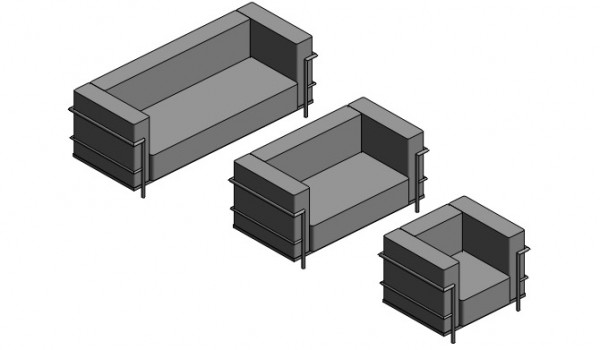Grande Armchair

This is another old-school approach to parametric modeling, today known better as part of Building Information Modeling. I tried to create parametric objects in order to understand and learn the capabilities of Revit. That was very useful for me in learning this interface.
I specially chose Le Corbusier’s chair set as my first experiment on family creation in Revit. On his 100th anniversary of Eastern Voyage, Le Corbusier’s soul returned here, walking around the conference halls of Istanbul. This set of furniture is one of the most refined examples, explaining his design intentions. Variations of the design object quickly remind me of the theme of this website and parametric modeling experiments. This led me to create a parametric definition of Le Corbusier’s chair set. There are lots of Revit families on the internet about this famous chair set. I examined most of them and tried to create a simple, yet effective one, without bugs and avoiding complexities. As always, construction planes are very important in designing families for Revit. Also, paths of the metal frames are constructed using associations of various planes. Sweep command effectively solved their modeling issue. Rest was easy. However, I couldn’t manage to find a solution for a multiple-seat version. Creating parametric arrays broke previous relationships of the target objects. After two days of trying, I quit that and finished the family with just one seat stretching.
The family is ready to use in Revit, however, I didn’t assign materials directly. Instead, I put type parameters and let you decide which material should be assigned to seating and frames. There are lots of potential parameters that can be assigned to experiment with “fancy” versions of LC chairs. That is not the case now.
Here is the model file [RFA: Revit 2012].








